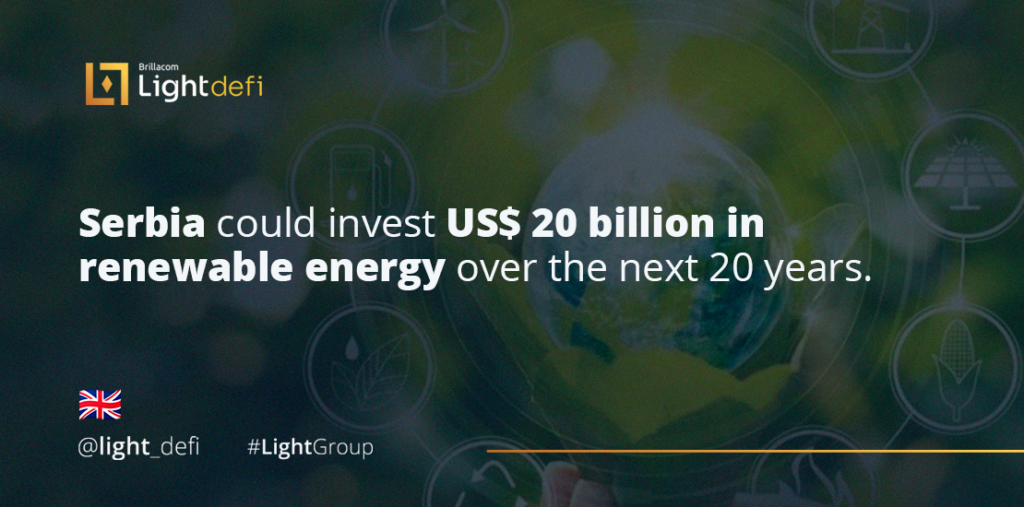The sun is an inexhaustible source of energy that can generate energy to supply industries and homes. At Light DeFi, to give you an idea, the sun will be used to supply a photovoltaic plant in Brazil.
With a total capacity of 480 MegaWatts (MW), Light DeFi’s photovoltaic plant will use the sun to generate enough electricity to supply 264,000. Like Light DeFi, Serbia is investing in renewable energy sources.
According to the country project, nearly US$ 20 billion will produce electricity from renewable sources. With this money, Serbia intends to finance sustainable projects over the next 20 years.
Like China, Serbia relies on coal for electricity. The eastern European country will gradually replace coal, considered a polluting energy source, with renewable energy sources like solar and hydroelectric.
Serbia is located in a region highly dependent on coal for energy, but that reality could change in the coming years. Kosovo and Bosnia, for example, are other countries that use minerals to produce electricity.
In search of a place in the European Union, these countries are adopting sustainable energy production practices. In an interview with Reuters, Serbia’s deputy prime minister, Zorana Mihajlovic, said that the country is preparing for an energy transition in which renewable energy sources should replace coal.
Until then, coal accounts for almost 70% of the entire energy matrix in Serbia, which uses thermoelectric plants to produce electricity by burning the mineral.
As the transition is expected to take place gradually, US$ 19.6 billion will be invested in sustainable initiatives to produce clean energy over the next two decades.
Natural gas and nuclear energy
Zorana Mihajlovic also said that this energy transition will occur between 2040 and 2050 when Serbia can achieve zero carbon emissions into the atmosphere. In addition to being generated through hydroelectric plants and photovoltaic panels, the country intends to obtain wind energy using the wind.
Serbia is also considering using nuclear energy to supply homes and businesses in the country. Although it does not produce this type of energy, an investment in expanding a nuclear power plant in Hungary could be financially supported by Serbia.
Meanwhile, natural gas imports are expected to increase considerably in Serbia in the coming years. The Banatski Dvor plant is expected to nearly double its natural gas storage capacity, raising it to 800 million cubic meters.
Serbia plans to invest in new pipeline networks through Bulgaria. The country will invest US$ 85 million in a network of gas pipelines that will connect with Azerbaijan. Another pipeline in the country will enable a connection with Israel and should be ready in 2023.
Source: Reuters


